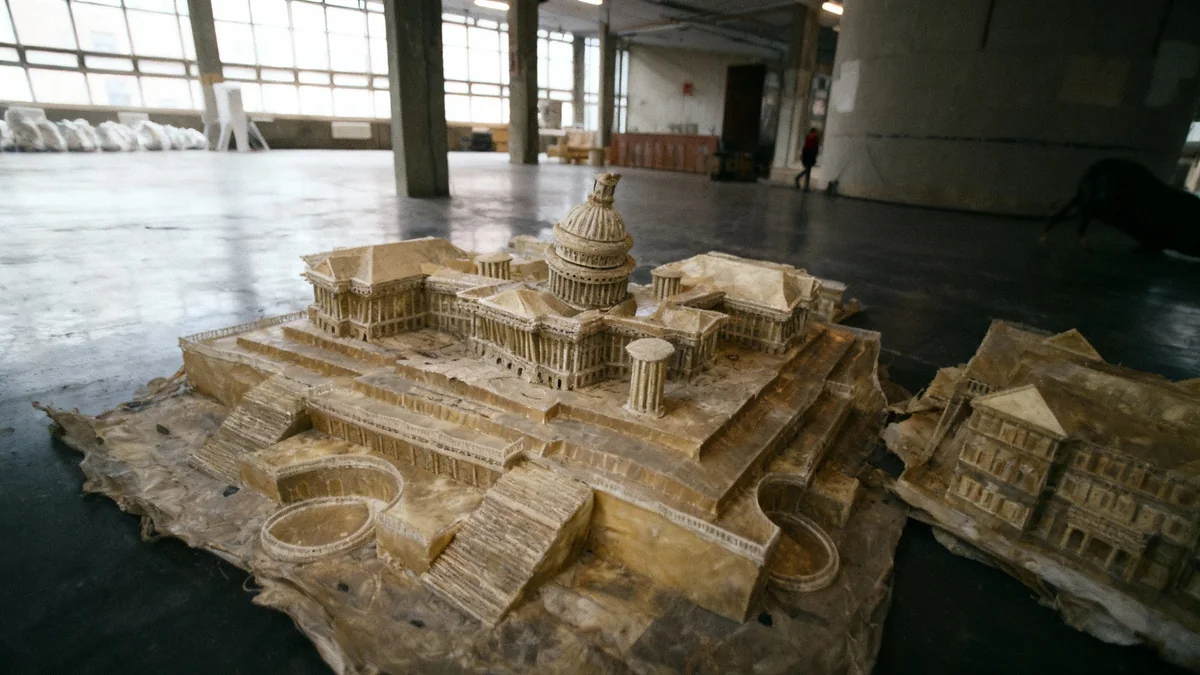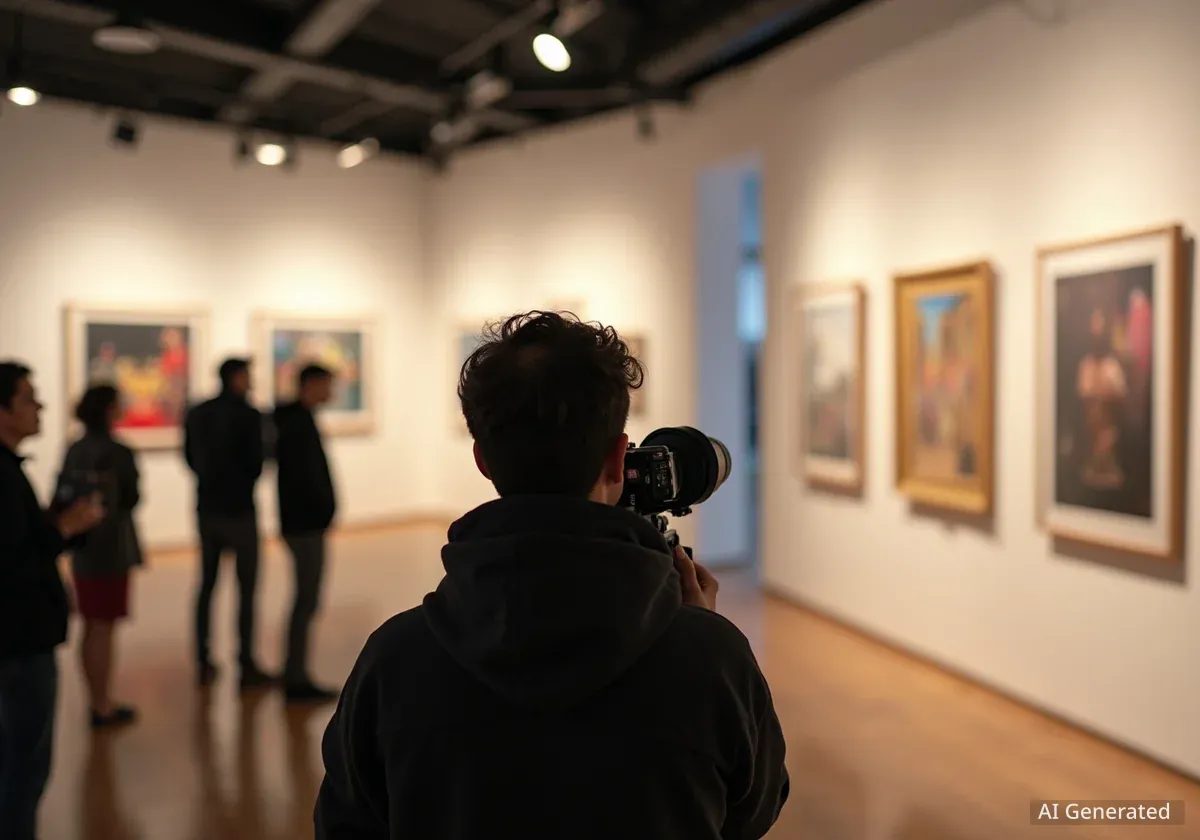The Metropolitan Museum of Art has announced that Chinese artist Liu Wei will create four large-scale sculptures for its iconic Fifth Avenue facade. These works are set to debut in the fall of 2026 and will remain on view through June of the following year. This commission continues The Met's annual tradition of inviting contemporary artists to engage with the historic architecture and vast collections of the museum.
Key Takeaways
- Chinese artist Liu Wei will create four large-scale sculptures for The Met's Fifth Avenue facade.
- The installation is scheduled for fall 2026 and will run until June 2027.
- This marks Wei's first major institutional exhibition in the United States.
- The project is the seventh in The Met's ongoing Facade Commission series, which began in 2019.
- Wei is known for his unconventional installations exploring urbanization and modernity.
A Dialogue Between Past and Present
The Met's Facade Commission series, launched in 2019, aims to foster a dialogue between art of the past and contemporary artistic expression. Liu Wei's project will be the seventh in this distinguished series. Artists invited to participate are challenged to interact with the museum's classical facade, which dates back thousands of years in its architectural and collection influences.
Wei, a Beijing-based artist, is celebrated for his evocative and often unconventional installations. His previous works often explore themes of urbanization and modernity. One notable example includes a series of architectural landmarks crafted from dog chews, highlighting his unique approach to materials and concepts.
This commission represents a significant milestone for Wei, as it will be his first major institutional exhibition within the United States. The artist expressed both excitement and apprehension about the undertaking.
"To dialogue with the tremendous legacy of human civilization through The Met’s Genesis Facade Commission makes me so excited and anxious," Wei stated.
Artist Profile: Liu Wei
- Born: 1972, during China's Cultural Revolution
- Art Movement: Rose to prominence in the early 1990s as part of Cynical Realism
- Style: Known for satirical, humorous, and unconventional installations
- Notable Work: "Love it! Bite it!" (2005–2007), sculptures of world landmarks made from dog chews
- International Presence: Participated in the inaugural China Pavilion at the 51st Venice Biennale in 2005
Engaging with Classical Architecture
The Met's facade has served as a canvas for several prominent contemporary artists before Wei. Kenyan-born artist Wangechi Mutu, Iranian-German sculptor Nairy Baghramian, and Lee Bul of South Korea have all contributed to the series. Each artist offered their unique interpretation of the museum's classical architecture, infusing it with a modern perspective.
The most recent commission, by Jeffrey Gibson, features ten-foot bronze sculptures of various animals. These animals hold significant symbolic meaning in certain Indigenous cultures. Gibson's pieces were unveiled in September 2025 and will be on display through June 2026, directly preceding Wei's installation.
Liu Wei's upcoming work is expected to continue this tradition of reimagining the classical. He will create several composite sculptures, utilizing a diverse range of materials. The exact nature of these materials and the final forms of the sculptures remain highly anticipated.
The Met's Facade Commission
The Facade Commission is an annual initiative by The Metropolitan Museum of Art. It invites contemporary artists to create site-specific installations for the niches on the museum's Fifth Avenue facade. These niches, originally designed for sculptures, remained empty for decades. The commission provides a unique opportunity for artists to engage with the museum's historical presence and its vast collections, bridging ancient and modern art forms.
- Initiated: 2019
- Purpose: To create a dialogue between historical architecture and contemporary art.
- Location: Niches on the Fifth Avenue facade.
- Previous Artists: Wangechi Mutu, Nairy Baghramian, Lee Bul, Jeffrey Gibson.
Wei's Artistic Vision and Impact
Born in 1972 during China's Cultural Revolution, Liu Wei gained recognition in the early 1990s. He was part of the Cynical Realism movement, known for its satirical and often humorous commentary on the socio-political landscape of the time. His artistic journey has included participation in numerous international exhibitions.
In 2005, Wei showcased a light installation titled "Star" at the inaugural China Pavilion during the 51st Venice Biennale. His work has consistently challenged perceptions, often blending raw expression with refined execution.
Lesley Ma, Associate Curator of Asian Art at The Met, highlighted Wei's distinctive approach. "For me, his work always compellingly pierces through perceptions of reality with a blend of rawness and refinement," Ma commented in a museum statement. She further expressed enthusiasm for how Wei will challenge expectations for the classical niches and public sculptures.
The artist's unconventional methods have sometimes led to unexpected outcomes. For instance, after several rejections from the 2004 Shanghai Biennale panel, Wei submitted a photograph of a mountain landscape formed by naked buttocks. To his surprise, this submission was accepted, showcasing his willingness to push boundaries and provoke thought.
Looking Ahead to Fall 2026
The upcoming installation by Liu Wei promises to be a significant cultural event in New York City. His work will offer a fresh, contemporary lens through which to view The Met's enduring legacy. The integration of his distinctive style with the museum's classical facade is expected to generate considerable discussion and public interest.
Visitors to The Met in fall 2026 will have the opportunity to experience this unique blend of artistic traditions. The commission reinforces the museum's commitment to presenting diverse voices and engaging with global contemporary art. It also underscores the evolving role of public art in urban landscapes.
The preparation for such a large-scale project involves extensive planning and coordination. The selection of materials, fabrication processes, and the final installation will all contribute to the overall impact of Wei's vision. Art enthusiasts and the general public alike are eagerly anticipating the unveiling of these new sculptures.




